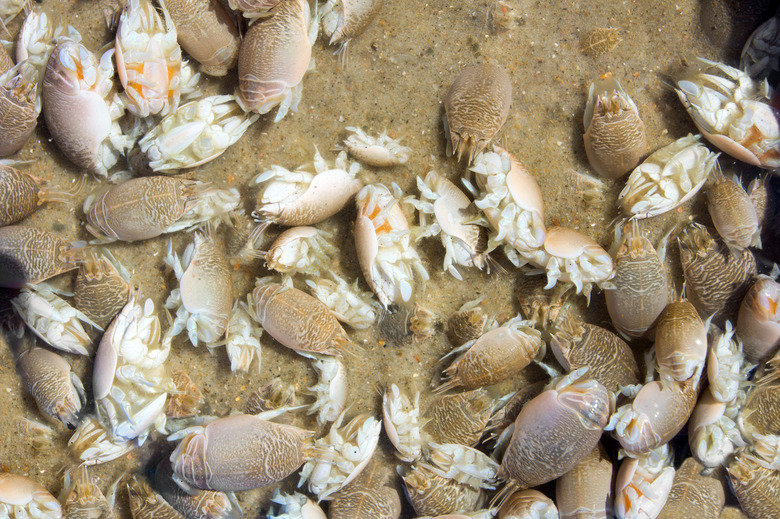Bug Bites From Beach Sand
With dry sand that's easily flooded by fresh or salty water, few hiding spaces from the hot sun and no visible food sources, beaches may look like inhospitable habitats for most animals. However, beaches are hosts to many different, uniquely adapted species, some of which can leave a visitor with itchy or painful bites. If you find yourself covered with bites after a visit to the beach, you were likely the target of sand flies or biting midges, also known as no-see-ums or punkies.
Biting Flies
Biting Flies
Flies (Diptera) are one of the largest groups of insects and can be found throughout the world in many different habitats. Some species, like fruit flies, are plant feeders, while others, like female mosquitoes, black flies and biting midges, are bloodsuckers, requiring a high-protein meal to lay eggs. Biting midges (Culicoides spp.) are tiny, gray flies, usually less than 3 mm long. They are abundant in salt marsh areas and, like mosquitoes, are capable of transmitting parasites and diseases. Sand flies (Lutzomyia longipalpis) are small, hairy flies about 5 mm long. They occur in tropical and subtropical locations and are vectors of Leishmania parasites. Both biting midges and sand flies are known to feed on beach-goers.
Sand Fleas
Sand Fleas
While there are several online references to "sand fleas" and their bites, few address the actual identification of a "sand flea," simply because there isn't one. Fleas (Siphonaptera) are small, wingless insects that are parasites to birds and mammals. Small crustaceans are often referred to as "sand fleas," but these are not insects and they do not feed on human blood. There is, however a flea called the Chigoe flea (Tunga penetrans) that can burrow into the skin, causing painful sores. This insect occasionally occurs in the southern United States but is more often seen in patients after a visit to a tropical area. The Chigoe flea is sometimes mistakenly called a "sand flea" since it often affects people who go barefoot around beaches. Without treatment, the wound can become susceptible to secondary infections.
Symptoms
Symptoms
The way that the body reacts to a bug bite varies with each individual depending on their immune system. Some people have a severe reaction to bee stings while others barely notice them. The same is true for those receiving bug bites at the beach. Some may experience mild redness and itching around the bite area, and others may show signs of severe and painful swelling. Often the bites are concentrated around the feet and lower leg, but if you've been lying on the beach, your whole body could be susceptible to bites. Evidence of a Chigoe flea bite includes a swollen white nodule with a black center, usually on or around the feet.
Prevention
Prevention
One of the best ways to avoid bug bites is to stay covered up, but this is rarely desirable if you are spending time at the beach. Wear long sleeves and pants during the most active times for biting insects, at dusk and dawn. Avoid Chigoe flea infestations by wearing shoes along tropical beaches and surrounding areas. Insect repellents containing DEET that typically work against mosquitoes are also effective against other biting insects.
Cite This Article
MLA
Godawa, Jean. "Bug Bites From Beach Sand" sciencing.com, https://www.sciencing.com/bug-bites-beach-sand-12142736/. 19 April 2018.
APA
Godawa, Jean. (2018, April 19). Bug Bites From Beach Sand. sciencing.com. Retrieved from https://www.sciencing.com/bug-bites-beach-sand-12142736/
Chicago
Godawa, Jean. Bug Bites From Beach Sand last modified March 24, 2022. https://www.sciencing.com/bug-bites-beach-sand-12142736/
